LAB REPORT
Science and Technology Making Headlines
June 16, 2017
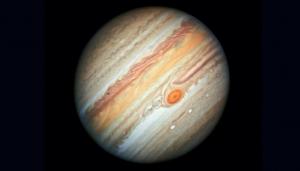
Jupiter is not only the largest planet in our solar system, it’s also the oldest.
Jupiter is one old-timer
By studying the makeup of ancient meteorites from the outer solar system, a Lawrence Livermore scientist and collaborators determined that Jupiter formed approximately 1 million years after the Big Bang, which occured 4.57 billion years ago. By comparison, Earth formed tens of millions of years after the Big Bang.
To study one of the biggest objects in the solar system, LLNL’s Thomas Kruijer and colleagues turned to some of the smallest: meteorites. Most meteorites come from the asteroid belt currently located between Mars and Jupiter but probably were born elsewhere.
Luckily, meteorites carry a signature of their birthplaces. The gas and dust disk that the planets formed from had different neighborhoods. Each had its own “zip code,” areas enriched in certain isotopes, or different masses of the same elements. Careful measurements of a meteorite’s isotopes can point to its home.
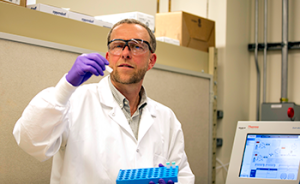
LLNL’s Deon Anex holds a vial containing molecules from human hair. Anex ground up the hair, then broke it down further into pieces called peptides. Photo by Julie Russell/LLNL
Splitting hairs to solve crime
DNA evidence from humans is still the best way to link a suspect to a crime. The process for analyzing this evidence is consistent and reliable. Plus, experts can check the evidence against huge databases of people’s DNA. If their DNA shows up at the crime scene, a suspect was probably there. But investigators don’t find DNA evidence at every crime scene. DNA just doesn’t stick around that long. The fragile genetic strands can break down easily.
Hair, however, is stronger stuff. Its proteins often last hundreds of years.
And these offer a new way to identify people. “It’s indirect DNA evidence,” notes Deon Anex, a chemist at Lawrence Livermore National Laboratory. He’s looking for ways to match hair proteins to people.
DNA contains the instructions for building proteins. Cells follow those instructions to make building blocks called amino acids. Those amino acids combine to form proteins. A small difference in the DNA, called a mutation, can change a protein’s amino-acid makeup.
Anex’s team is tracking down these changes in hair proteins.

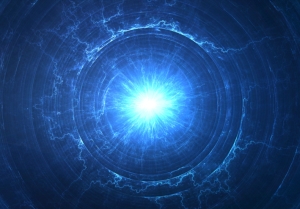
Nuclear blasts trigger an effect called electromagnetic pulse, or EMP. EMP can disrupt or even destroy electronics from miles away.
In a nuclear blast, say goodbye to your electronics
Nuclear blasts trigger an effect called electromagnetic pulse, or EMP, which can disrupt or even destroy electronics from miles away.
Blasts miles above a country like the U.S. might severely damage its electric and telecommunication infrastructure. Nuclear detonations that occur dozens or hundreds of miles above Earth could have devastating consequences compared to those that happen on the ground.
The U.S. government actively plans for 15 disaster scenarios, one of which is a terrorist-caused nuclear detonation that occurs close to the ground with a yield of about 10 kilotons — roughly 66 percent as powerful as the Hiroshima blast.
"There would be some localized EMP effects," said Brooke Buddemeier, a radiation expert at Lawrence Livermore National Laboratory, "but if you were close enough for your equipment to be damaged by EMP (within a couple miles), then you are also close enough to be significantly impacted by the blast wave."

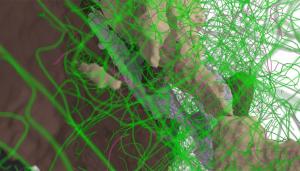
LLNL staff scientist Luke Thornley helped engineer the semisolid metal, a bismuth-tin mixture, that can be extruded through the nozzle of a specially designed 3D printer.
Acts like a solid but flows like a liquid
Direct metal 3D printing could produce lighter parts that require less material and less inspection.
Lawrence Livermore researchers have made progress in their quest to find the right conditions for printing metal directly from a nozzle. The revolutionary method could eventually replace today's state-of-the-art powder-based metal techniques.
Metal 3D printing has enormous potential to revolutionize modern manufacturing. However, the most popular metal printing processes, which use lasers to fuse together fine metal powder, have their limitations. Parts produced using Selective Laser Melting (SLM) and other powder-based metal techniques often end up with gaps or defects caused by a variety of factors.
To overcome those drawbacks, Lawrence Livermore researchers, along with collaborators at Worchester Polytechnic Institute, are taking a wholly new approach to metal 3D printing with a process they're calling Direct Metal Writing, in which semisolid metal is directly extruded from a nozzle. The metal is engineered to be a shear thinning material, which means it acts like a solid when standing still, but flows like a liquid when a force is applied.
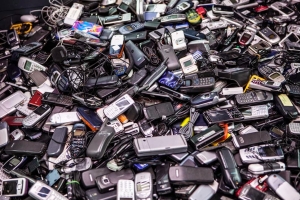
Worldwide, 50 million tons of e-waste is generated annually.
Giving cellphones a boost
In an effort to help eliminate the 50 million tons of e-waste that comes partly from obsolete smartphones, researchers at Lawrence Livermore National Laboratory have come up with a way to extend the life and boost the productivity of lithium ion batteries — the standard power source in today’s electronics — by treating their electrodes with hydrogen.
Such a development could be huge for preventing e-waste, given that most people toss their old phones within two years when the battery inside starts to deteriorate and underperform.
E-waste often ends up improperly disposed of in landfills where toxins common in electronics like lead, mercury and cadmium can leach out and contaminate surrounding soils and groundwater.





